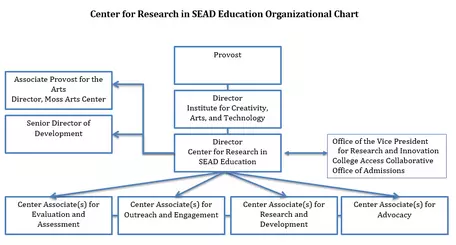Organizational Structures
Every center is unique: in vision, in mission, in context, and in structure. There are many ways of effectively organizing the organizational structure of centers. Local implementation of center work requires deep knowledge of institutional culture and resources. For center activities to best address undergraduate STEM success it is important for the mission and vision to be clearly communicated(add link to this page here), so that relevant partnerships may be established (add link for building partnership pages here). The organizational structure of a center adds coherence and raises the visibility of the important contributions centers make to undergraduate STEM teaching and learning. The way in which a center utilizes it's available resources to provide programming can be facilitated through the establishment of appropriate structures.
When determining the organizational structure and the infrastructure of a center, it is important to understand what it is established to do or accomplish.
Collaborations are key elements in the functions of successful centers. Collaborations leverage talents outside of the Center in providing programming and expertise, expand the Center's connections to new networks and potential new synergies, create faculty champions of the Center, and provide more widespread credibility to the Center.
A center's people, paid and volunteer, are its most valuable asset. Without them, nothing can happen regardless of the size of the budget.


